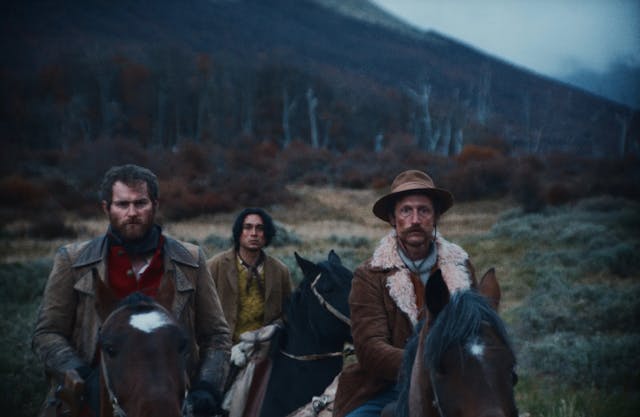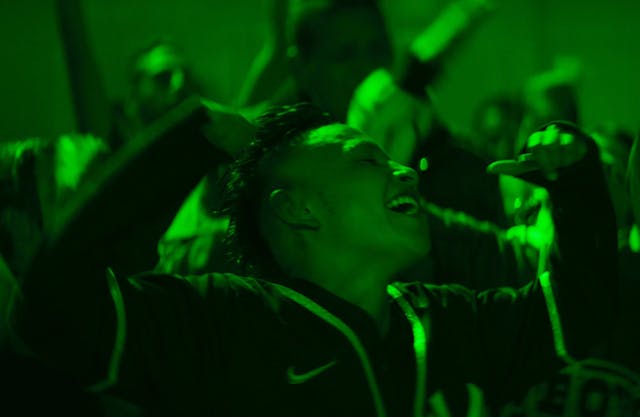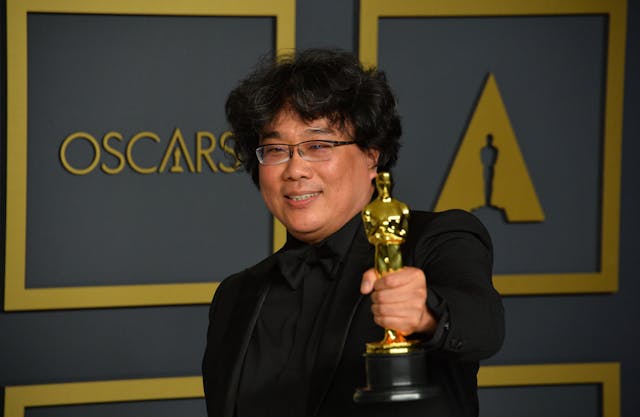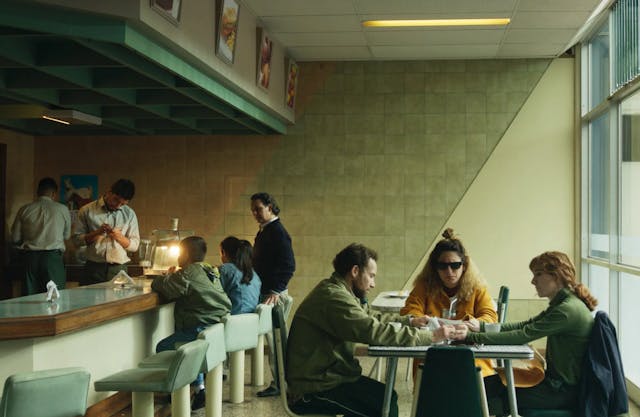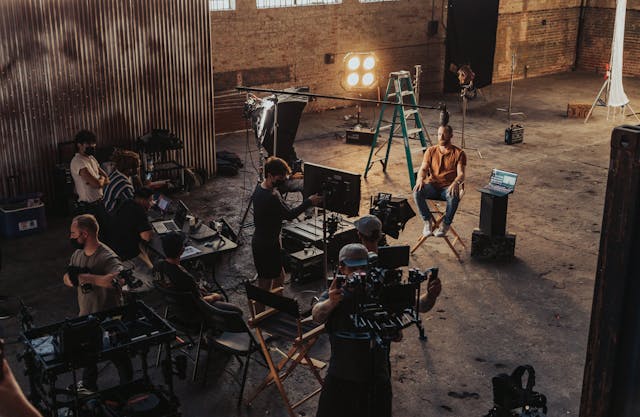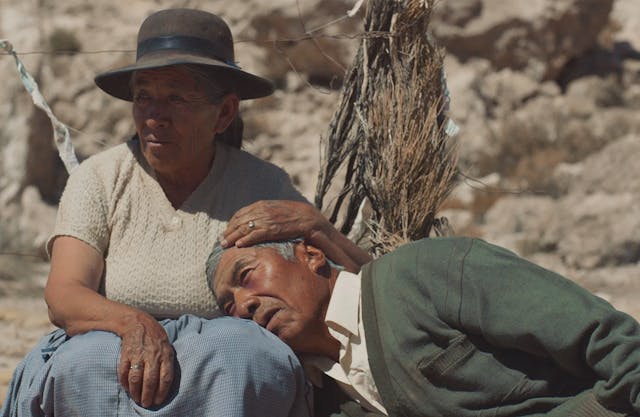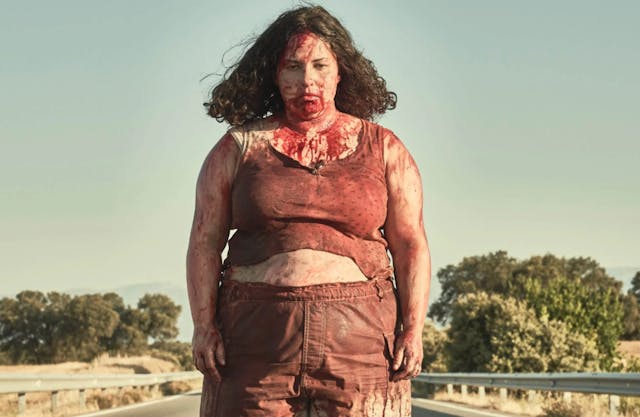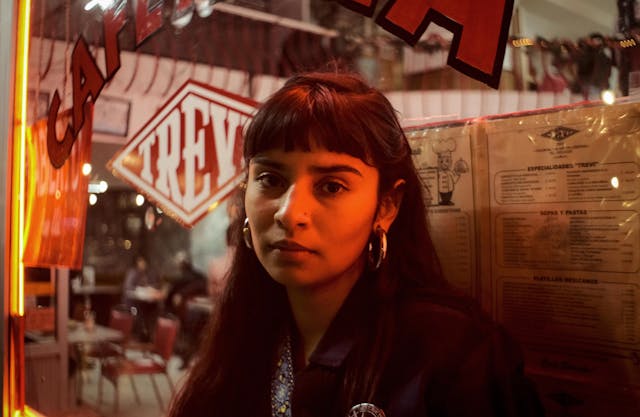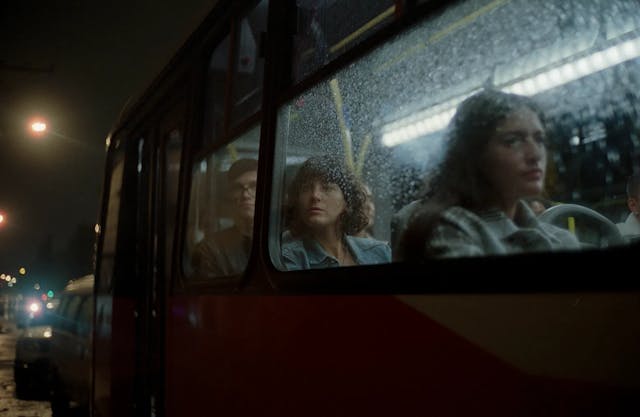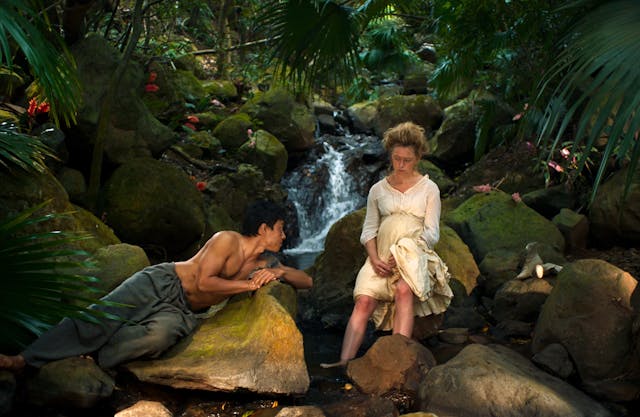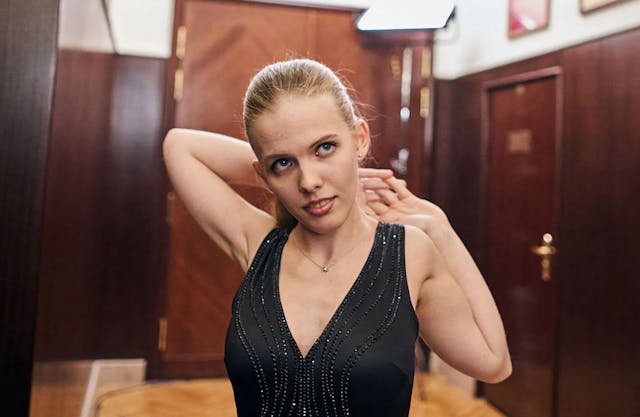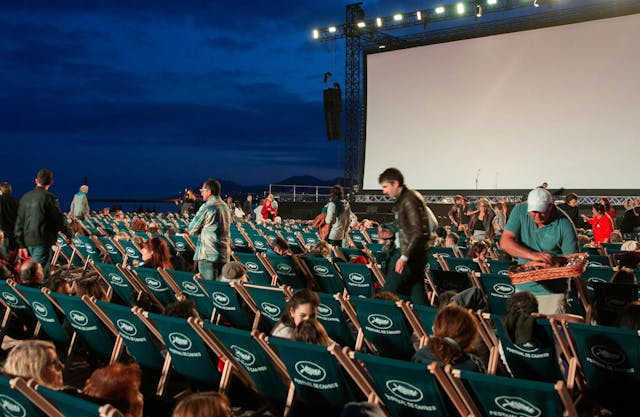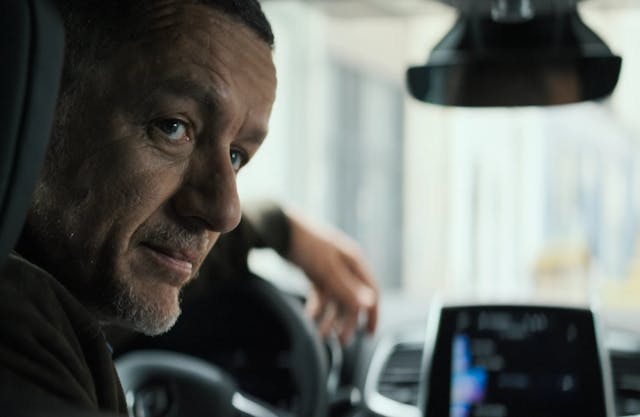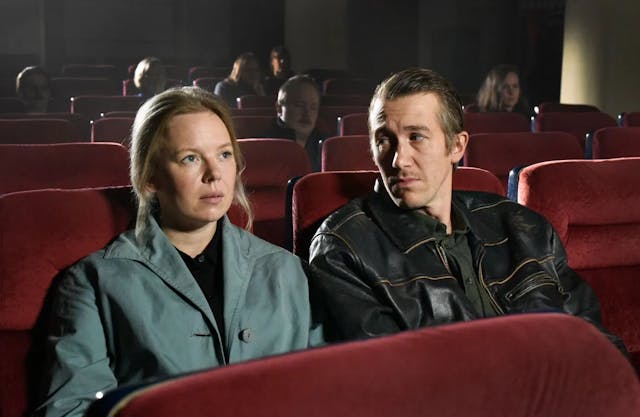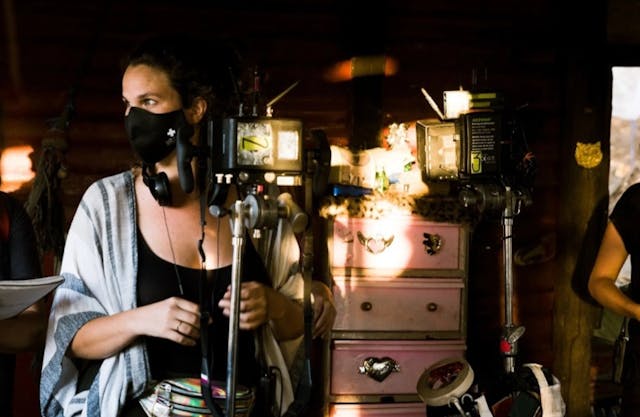"The Grand Bolero": A Thriller In Tune With The Art House Crowd
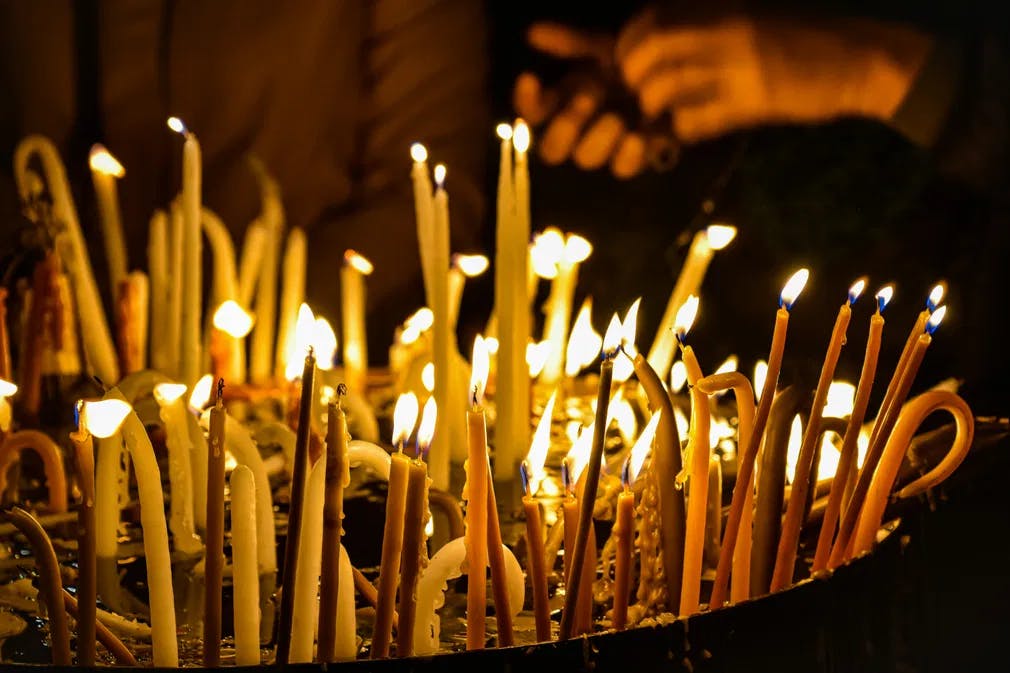
“The Grand Bolero” is a hothouse drama about obsession, incubated during the COVID era, and a fascinating capsule of that time. The particularities of life during the pandemic color the plot in unexpected ways. It’s a tight story developed in a single location with a cast of four. The filmmakers see this not as an inconvenience but as an integral dramatic element of the movie. The pandemic rages on and off camera. We see news reports in the background on a TV. Ambulance sirens sound far away, as ominous as distant thunder. These are not mere anecdotes for the press notes. The life-saving repressive measures of the moment put the world in synch with the nature of our protagonist.
The first time we see Roxanne (Lidia Vitale), she says "Fuck You" to the camera - that is, us - as she puts off a cigarette. The target of her fury is a sad, unconvincing sign haphazardly posed on the locked door of the church where she works and, for the time, lives. "Everything Will Be Fine," promise the black letters on canvas. Just by the introduction, we know things have never been fine for Roxanne, a lonely, bitter middle-aged woman. The pandemic is not derailing a happy life for her; it's just a new parcel of inconveniences with which to deal. She never spouts truther nonsense but hates to wear her mask. She usually keeps it dangling off one ear, much to her boss' chagrin. You know she would be as grouchy if things were normal.
The Taming Of The Shrew
The shutdown finds Roxanne and priest Paolo (Marcello Mariani) locked in an almost derelict church in rural northern Italy. It houses valuable art pieces, but the biggest treasure is a monumental antique pipe organ. The woman is a lonely, high-strung restorer who reserves her tenderness for the musical instruments. An accident takes the life of her assistant in the opening scene. Paolo’s solution is to bring in Lucia (Ludovica Mancini), a young, mute girl happy to work in exchange for room, board, and music lessons.
Roxane is furious at having to shoulder the weight of Paolo’s charity case. Paolo takes her in because she has nowhere to go, and her sole relative, brother Luka (Brandon Koen), is barely keeping afloat, hustling for day jobs during the pandemic.
The stage is set for a story that can take many different paths. Is this a moving tale about a cold heart thawing gradually by associating with a weakling? - Lucia’s appearance is almost feral, bringing to mind classics like “The Wild Child” (Francois Truffaut, 1970). Or is this something more mature, crossing into sexual repression, healed by carnal desire that just can’t be denied? Are Lucia and Luka’s designs innocent?
It would be a disservice to reveal the twists and turns of the plot. Suffice it to say, director Gabriele Fabbro, cowriting with Yalie Turk, gets the most out of the premise and crams a rich story in a movie that barely lasts an hour and a half. Not content with brevity, it runs at an accelerated clip. Most of the plot development depends on the two women, with the action confined to the church and a few fateful strolls in the surrounding forest and rivers.
Still, it feels like “The Grand Bolero” contains multitudes. You can credit the way Fabbro registers the magnificent church decay, aided by cinematographer Jessica La Malta. The decaying building is a physical manifestation of the claustrophobic relationship between characters who can’t run from each other, but we, as an audience, never feel trapped. We get the weight of history, too, and the rote expectations on women. Roxanne never articulates her desires, but we know she is holding back on her true self. Her relationship with music and the instrument she tends to play with unexpected tenderness points to untapped, repressed emotions.
When Music Speaks Volumes
It would be a cliche to say that the music is another character in a movie like this. But in this case, it is. Or, to be more accurate, it completes the characters and makes them whole. Ravel’s Bolero and Wagner’s compositions say all the words Roxanne strangles with her bitterness. Lucia, on her part, inadvertently reveals her secrets in drawings Roxanne spies secretly. The performance of art is the one instance when these characters can be truly free and communicate meaningfully.
Communication, or lack thereof, is a salient point in "The Grand Bolero," it brings along a weak point in the project. Lucia and Luka are not Italians but from an English-speaking country - it is never clarified if it's the U.S., England, or any other. Their foreignness gives Roxanne another reason to be suspicious of or outright hate them. Alas, it does not feel organic to the plot and can turn out distracting. How the hell did two white kids who don't speak the language end up in northern Italy in the middle of the pandemic? It might have been more believable - and interesting - to make the character African or Middle-Eastern refugees, But then again, that would be a different movie altogether.
I’m afraid Fabbro falls prey to putting creative decisions at the mercy of commerce. Luka and Lucia’s connection to the English language seems like a calculated move to make the movie more “sellable” to the United States, the U.K., and markets dominated by Shakespeare’s tongue. Still, this minor complaint gets swept away as the movie climaxes.
Curtain Call For a Virtuoso
As the movie careens towards the end, the characters’ actions may turn mystifying, but Lidia Vitale, in particular, makes them wholly believable. This kind of performance should translate into an international breakthrough, but it did not, which is tragic. The movie had a good run in American film festivals, reaching the top with Fabbro winning Best Director at the Phoenix Film Festival. However, it failed to achieve wide theatrical distribution in the Art House market, turning Vitale into a well-kept secret. It could not happen to a better, more fiery performer. She is in the same league as Sidse Babbitt Knudsen in Peter Strickland’s “The Duke of Burgundy” (2014).
Want to get an email when we publish new content?
Subscribe today